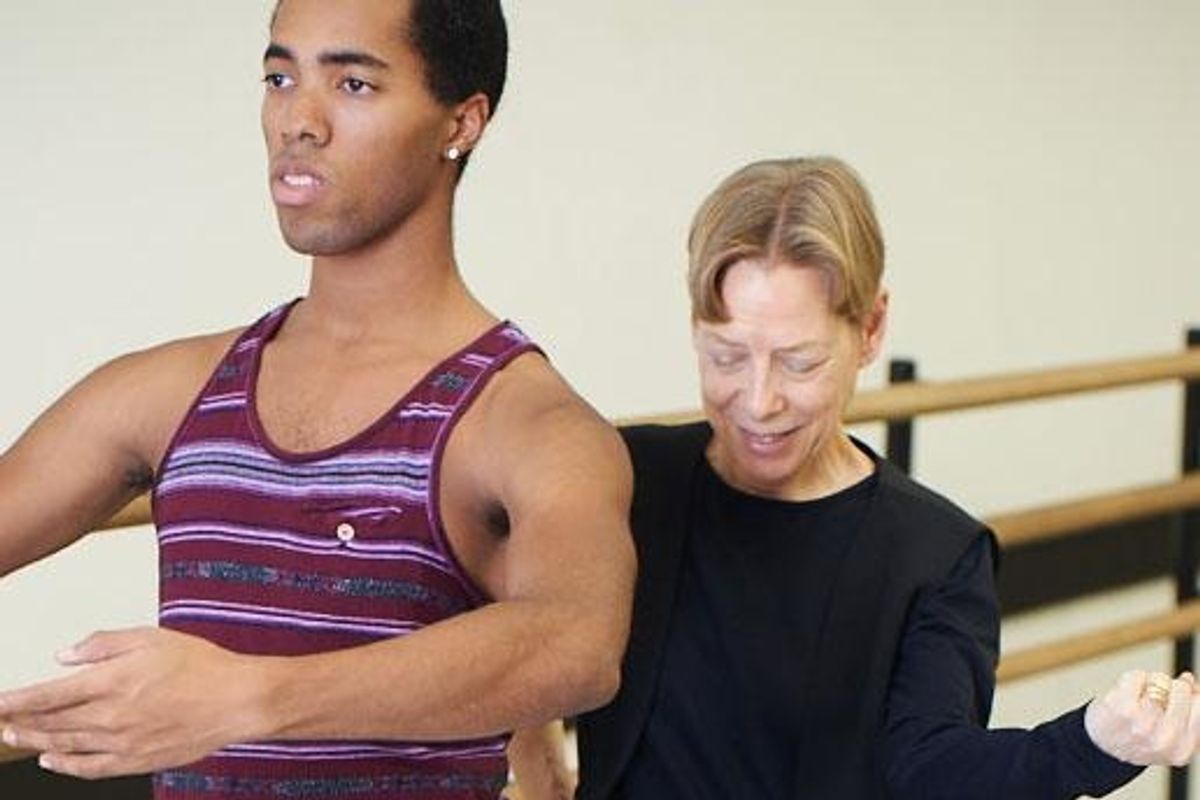
Irene Dowd’s third-year students at The Juilliard School sound more like they’re in medical school than a dance class, citing complex kinesiology terms and muscle names, like multifidus and iliocostalis. But instead of memorizing the vocabulary with index cards and textbooks, the students in Dowd’s anatomy/kinesiology class come ready to move. “Motor-learning specialists have found that we learn by doing,” says Dowd, who began teaching at Juilliard as an assistant to ideokinesis matriarch Lulu Sweigard in the late 1960s. “If you learn it [anatomy] intellectually, you forget it. You have to do it physically, and then you can start to understand what you’ve learned.”
In class, Dowd leads students in a series of warm-up exercises, and each step of the way she asks which muscles are moving, how and to what exertion level. Students often use tape to visualize the muscle groups in action: Attaching a piece of colored tape onto a peer’s lower back, for instance, shows how the lower-spine muscles might elongate or contract to accomplish a twisting motion. “It’s not always obvious what is engaging, shortening or lengthening because our bodies are three-dimensional. We’re rarely just moving from a neutral position,” she says. “That’s what makes kinesiology, or the analysis of muscle action, really exciting and challenging.”
Dowd’s students also practice a strenuous trunk-stabilizing movement sequence, which (among other benefits) helps develop hamstring strength. “We found that many of the incoming students are hypermobile, but they lack some of the strength and stamina necessary to withstand the high technical and endurance demands put on them during performance seasons,” she says. Dowd teaches freshmen the stabilization material in their first weeks of school, and its practice has helped reduce knee and stability issues.
Injury prevention, however, is just one payoff of studying anatomy. “Certainly we want to avoid injury if we can, though luck often plays into that,” Dowd says. “But even more valuable is that we can learn to be better artists. Each piece of anatomical information can inform our dancing right away. It gives us more articulation and clarity.” Anatomy, Dowd says, “opens up the possibilities.”
Here, Dowd explores the concept of outward rotation and shows how a dancer can find increased flexibility and greater ease of movement:
A faculty member of The Juilliard School since 1995, Irene Dowd holds a BA from Vassar College, studied dance and choreography at Juilliard and completed anatomy courses at Columbia-Presbyterian Medical School and Teachers College, Columbia University. In addition to her private practice for neuromuscular training, Dowd teaches at Movement Research and the master’s degree program at Hollins University/American Dance Festival. She is also a guest faculty member of Canada’s National Ballet School and Tisch School of the Arts at NYU. She is the author of Taking Root to Fly: Articles on Functional Anatomy, and she has taught anatomy and choreography at American Dance Festival; Laban/Bartenieff Institute of Movement Studies; Teachers College, Columbia University; and Wesleyan University.
Originally from Columbia, Maryland, Leiland Charles is a third-year student at Juilliard.




